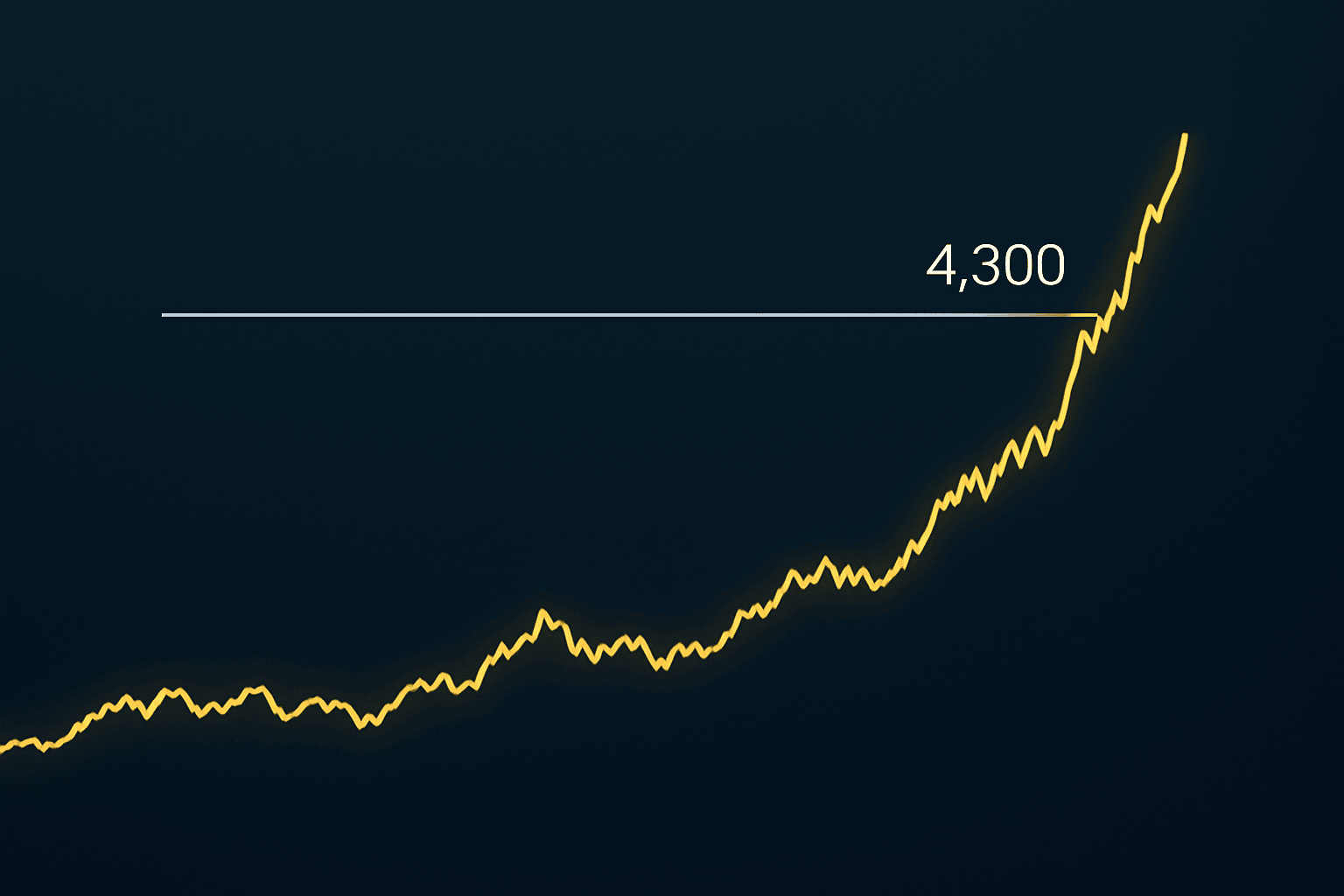Can Gold Hold $4,300? What Investors Need to Know
Daily News Nuggets | Today’s top stories for gold and silver investors
October 20th, 2025
Gold Catches Its Breath Around $4,300
After touching $4,326 on Thursday — its 45th record high this year — gold is taking a breather around $4,260. The pullback comes after a remarkable run that saw the metal climb nearly 60% in 2025, racing from $3,500 to over $4,300 in just 36 days.
But nobody’s calling it a top. Fed rate cut expectations, central bank buying, and safe-haven demand amid trade tensions and the government shutdown continue to fuel investor interest. The question isn’t whether gold’s rally has legs — it’s whether prices consolidate here before testing $4,400, or if we see a deeper retracement first. Either way, the metal’s historic surge has redefined what investors consider “normal” for gold.
And one Wall Street strategist says that volatility might arrive sooner than bulls expect.
Morgan Stanley: Don’t Get Too Comfortable
Gold’s epic run has been thrilling, but Morgan Stanley’s Amy Gower is urging investors to stay grounded. In a recent Bloomberg interview, the metals strategist warned that gold isn’t immune to broader market pullbacks — especially if equities stumble.
The concern? This rally is different. Gold is climbing alongside stocks, bonds, and pretty much everything else, making assets more correlated than usual. If risk appetite fades and investors rush to raise cash, gold could get caught in the selloff despite its safe-haven status. Gower’s message: celebrate the gains, but brace for volatility. The next leg higher might not be as smooth as the last.
Part of what’s fueling gold’s resilience? A Washington crisis that shows no signs of ending.
Government Shutdown Drags Into Week Three
The federal government shutdown is now the third-longest in U.S. history with no resolution in sight. On Friday, federal workers will miss their first full paycheck of the cycle, while economists warn the economic damage could accelerate from here — potentially dragging GDP down by 0.25% per week instead of the earlier 0.1% estimate.
The bigger problem for markets? A total data blackout. The September jobs report never came out, and the Fed is essentially flying blind as it weighs its next rate move. September inflation data finally drops Friday, but that’s just one piece of a much larger puzzle that’s gone missing.
For precious metals investors, shutdowns historically fuel safe-haven demand—and this one is checking all the boxes. Economic uncertainty is rising, the Fed can’t get reliable data, and political gridlock shows no signs of breaking. Both parties remain dug in over healthcare funding, with some analysts now predicting the shutdown could stretch into November. That’s the kind of backdrop where gold and silver tend to thrive.
While uncertainty drives safe-haven flows in the West, physical buyers in the East are proving that demand runs deeper than fear.
India’s Gold Buyers Trade Ornaments for Bullion This Diwali
Record gold prices are rewriting tradition in India. During Saturday’s Dhanteras festival — one of the year’s busiest gold-buying days — jewelry demand plunged nearly 30% from last year while coins and bars “flew off the shelves,” according to industry officials.
The math tells the story. With local gold prices up more than 60% since last Dhanteras, buyers are balking at the added 10-20% manufacturing charges that come with ornamental jewelry. Overall volume dropped 10-15%, but total rupee sales actually climbed thanks to higher prices.
What’s striking isn’t that demand weakened — it’s how Indians adapted. Rather than abandon the culturally significant tradition of buying gold during Diwali, consumers shifted to investment-grade products that give them pure metal exposure without the markup. Indian dealers are now quoting premiums of up to $25 per ounce over domestic prices, the highest in over a decade. That’s a clear signal: even at these elevated levels, physical demand in the world’s second-largest gold market remains remarkably resilient.
Gold’s not the only precious metal dealing with supply-demand tension.
Silver Supply Squeeze Eases as U.S. and China Shipments Flow
A sharp shortage in the London OTC spot silver market is being alleviated by large flows of silver from the U.S. and China — some 15–20 million troy ounces (≈311–467 tons) from the U.S. alone, along with some 1,000 tons total from the two countries.
The squeeze had been intense, driving silver nearly to $54.50 before cooling off as borrowing rates fell and inventory rebuilt. For investors, that means one near-term catalyst for higher prices has eased.
But here’s the bigger takeaway: the fact that a supply crunch happened at all underscores just how tight the physical silver market remains. Unlike gold, silver walks a tightrope as both an industrial metal and investment asset. As demand from solar manufacturing stays robust and investors hunt for inflation hedges, these supply bottlenecks could become a recurring theme — not just a one-time squeeze.




Post Comment